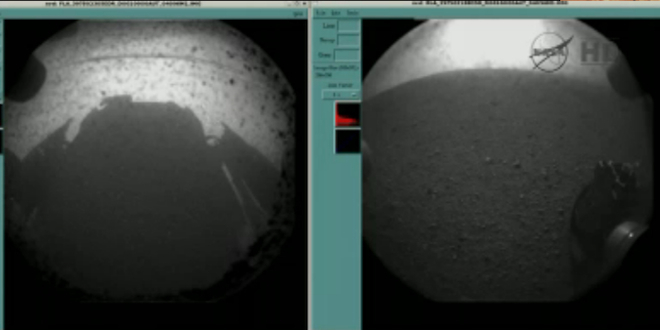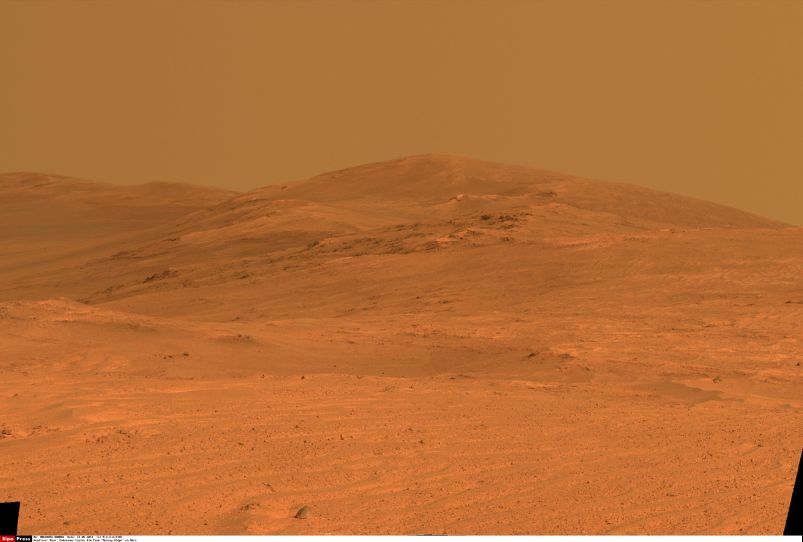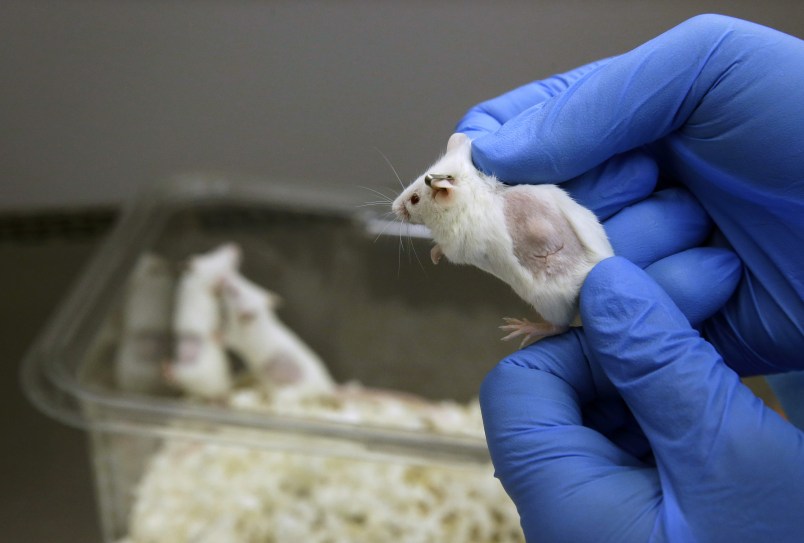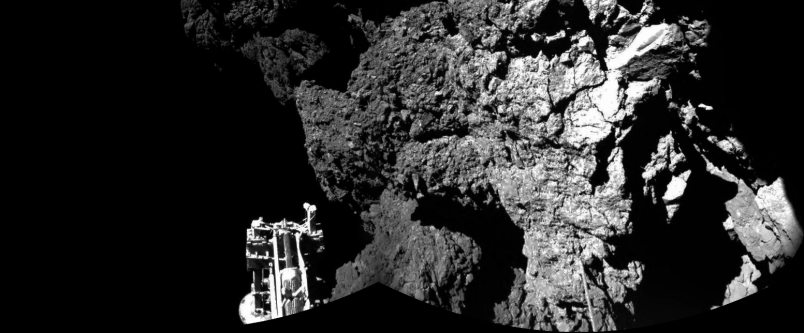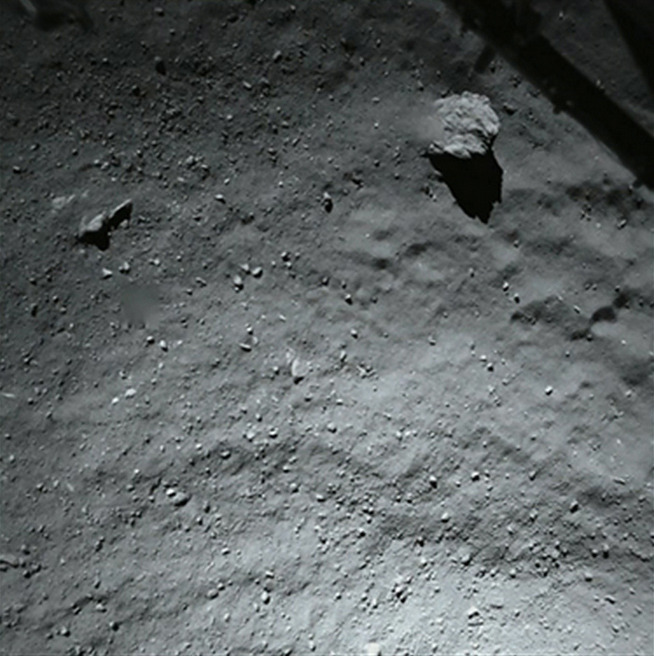Updated 1:03 p.m. ET, Monday, August 6
They have the pictures to prove it: NASA successfully landed the Mars Curiosity Rover, its largest and most advanced unmanned exploration vehicle on target on the surface of the Red Planet at a time of 1:14 a.m. ET on Monday, August 6.
A few minutes later, the rover sent back its first images, one from a rear-facing black and white hazard avoidance camera (hazcam) on the rover’s body and the other from a front-facing one.
The rear-facing camera showed the rover’s wheel on Mars while the front-facing one showed its shadow across the surface of a shallow area of the planet where the rover landed known as Gale Crater. See both of them below in a composite image from NASA:
Higher-resolution, full-color images from the rover’s other mast-mounted cameras are anticipated within the coming week to 10 days as the rover, also known as the Mars Science Laboratory, begins its mission.
“Everybody should be sticking their chests out and saying ‘that’s my rover on Mars,'” said NASA administrator Charles Bolden in a livestream of the scene at NASA’s Jet Propulsion Laboratory in Pasenda, California.
“Even long odds are no match for America’s combination of technical acumen and gutsy determination,” said John P. Holdren, director of the White House Office of Science and Technology Policy, in a news conference in Pasadena following the launch. “If anyone has doubts about U.S. leadership in space, there’s a one-ton piece of American ingenuity and it’s sitting on the surface of Mars and it should put any doubts to rest.”
Although led by NASA, the mission was also an international scientific collaboration involving 400 scientists from seven different countries.
Scientists at the Jet Propulsion Laboratory erupted into cheers and tears, hugging one another and high-fiving as the news of the landing was confirmed via a transmission from the rover back through the Mars Odyssey spacecraft, a NASA satellite previously sent up into orbit around Mars.
The landing was unprecedented in NASA history in terms of its complexity and uncertainty of success, a 7-minute-long ordeal dubbed the “seven minutes of terror” due to the fact that the rover would experience a delayed communications line with Earth and thus the outcome of the landing would not be known until after the event had already happened.
It was, to be specific, a 13-stage process that required an abrupt slowdown from 13,000 miles-per-hour to zero, with the landing craft housing the rover entering the Martian atmosphere, heating up, deploying a supersonic parachute and then a contraption known as a “sky crane.”
Fortunately, the landing was about as picture-perfect as NASA and observers could have hoped, with the craft touching down only a few hundred feet away from its precise target near a large Martian mountain known as Mount Sharp, around which NASA believes that liquid water might have flowed on an ancient Mars. The area is a prime candidate for discovering traces of minerals that would indicate of mars was ever habitable by carbon-based life, which is the Mars Curiosity Rover’s mission goal.
People from around the world followed the news of the landing live thanks to steaming video that NASA provided on its main website. The video was also shown on a large screen in Times Square, New York City.
NASA also offered live coverage through various social media accounts on Twitter, Facebook and Google Plus. However, once the first images from the rover were published online, the overwhelming interest proved to be too much and NASA’s websites briefly crashed.
The rover, which was launched from Cape Canaveral, Florida, in November 2011, cost about $2.5 billion, or “less than 7 dollars per every American,” as one NASA scientist put it during the post-landing news conference. At 10-feet-long, 9-feet-wide and 7-feet-high, the rover is about the size of a compact SUV, contains 10 different scientific instruments and is powered by a nuclear battery.
The last time NASA successfully landed rovers on Mars was in January 2004, when the agency sent two rovers, Spirit and Opportunity, about 20 days apart. The rovers were responsible for numerous discoveries, including detecting the presence of liquid water on Mars. Spirit has ceased communications but Opportunity remains semi-functional.
Late update: NASA on Monday afternoon published an incredible image of the Curiosity rover’s deployment of its supersonic parachute moments ahead of its landing, as seen from a camera aboard one of NASA’s two Martian satellites, the Mars Reconnaissance Orbiter. See the image below and at NASA’s website.

Correction: This post originally stated that the last time NASA sent a robotic spacecraft to Mars was in 2004, when in fact, the Phoenix lander, a stationary probe, was sent in 2008. We’ve since updated the post to remove the erroneous reference and regret it.





